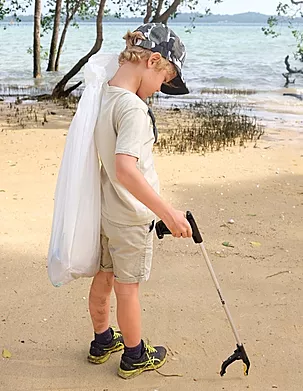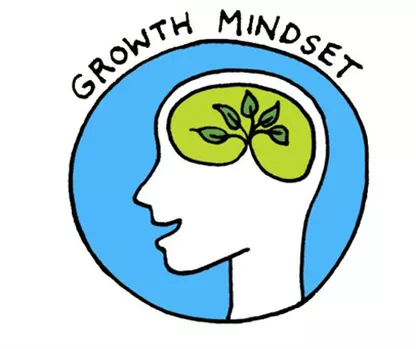“The future of our planet is in our children’s hands”. A phrase we hear often, but for our children to take on this heavy responsibility and save a world that we have been part of destroying, they need to be educated. By us as parents, by the schools and whoever else they are already learning from on a daily basis. But when educating our future eco-warriors, how can we make sure that all this important information will also be converted into action? Well, it takes work, and it takes a “growth mindset”. Maguelonne Rousseu takes you through the process, so you as a parent can get a positive, patient and resilient child – and perhaps one day an eco-warrior!

What do eco warriors have in common? They all share a love for Mother Earth and the commitment to protect it. A deep connection with nature and other human beings, the strong feeling that when the situation seems bad, we can do something about it. This positive attitude is part of having a “growth mindset”.
Even when things don’t work out as planned, great eco-warriors keep this postive mindset, this trust in people: that we can improve if we put time and effort into it. They have HOPE that things will go well, no matter what.
What is a growth mindset?
-
it’s to have long term goals or dreams and to be willing to move forward to reach them, even when it’s challenging
-
it means being patient, and to understand that things take time to realize, and that when you put effort into something, you have more chances to get the results you expect
-
It’s to be resilient: to accept failure and difficult situations and be able to recover from them
-
it’s to see failure as an opportunity to improve and learn, not to give up, especially when things are challenging and frustrating
-
it means you try again, as many times as necessary until you find a better way to successfully achieve what you want to do
-
it means to enjoy the learning journey as much as the result, to deeply understand that the profound satisfaction of reaching your goal comes only when you put effort in doing something.
How can we develop this mindset especially when so many around us struggle with negative perspectives?

To have a growth mindset and be a resilient adult, you need to develop those qualities first as a child.
Resilience starts in infanthood with a strong attachment to the primary caregiver, when the value of having hope in this world develops: as a baby, I trust that when I feel bad, uncomfortable, scared, I can always count on a special someone (often the mother, but not only) to help me and comfort me. Knowing that I’m protected and secure any time I need it, will give me the strength to explore my world. As a toddler and later as a child, I will be able to keep this mindset if my parents / caregivers let me take – reasonable – risks, and fail! To learn how to recover from difficult situations will develop my resilience and help me to discover who I am and what I can and cannot do yet, but also if I want to improve. I learn to try again until I fully get how to succeed. Later in life, this ability to focus on what I need to do to improve will also help develop inner motivation: I do things for myself and can be successful in my own ways, not just because of what is expected from me.
What can parents do to help their child develop resilience and a growth mindset?
-
Firstly, a deep parent-child connection is necessary, which begins to develop in pregnancy and the first years of life.
-
When kids are in toddlerhood, this profound attunement will help parents to understand, when to step back and let the child experiment, explore and make creative attempts.
-
To guide the child time after time in accepting failure and negative emotions as part of life and normal development. This will grow the child’s resilience so she/he can learn step by step how to recover by themselves from tough situations and become more independent.
-
The acceptance of failures as part of the learning will push the child to be more solution-focused.
-
The acknowledgement of negative emotions as being ok will help the child to develop more empathy.
So, what does it look like to help a child develop a growth mindset so they can take the future in their hands?
Here are few practical tips that can help children care about the environment:
-
Use mirroring to make children develop empathy: “How would you feel if you were a fish and were swimming among plastic bags all day long?”
-
Help them develop consciousness asking curiosity questions: “Where do you think the things we throw away go, and what happen to them thereafter?”
-
Take their natural interest for nature and animal world to talk about extinct animals and why they disappeared
-
Help children to set realistic goals to ensure a real change, like for instance refusing plastic straws when buying a drink. When a new habit is formed and consistent, move on to another thing to improve, but always involving your child in the process: “Now that we don’t use plastic straws anymore, what else do you think we could do to save the planet?”
-
Recognize the challenges we all face trying to protect nature and use it as an opportunity to improve: “When doing the groceries, we often forget our reusable bags that we bring to avoid using plastic bags. Can you please help us find a way to not forget our reusable bags?”
If we want to change the world and save our planet, we need to start with teaching the young generations on how to be more conscious about their choices, by fostering growth mindset, so they can find the solutions of tomorrow and save the environment we live in.




